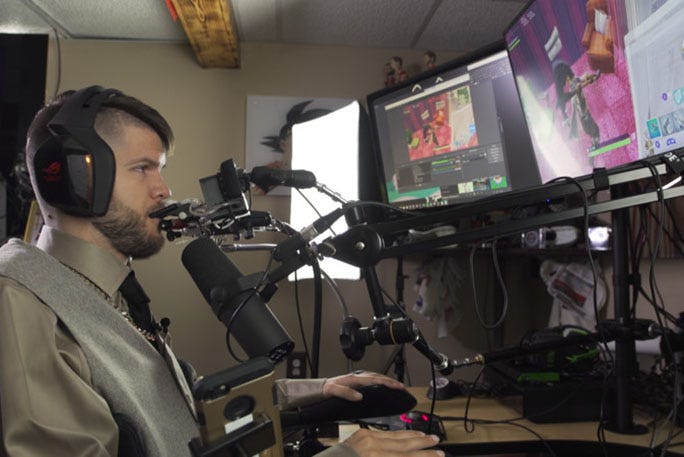Member-only story
Technology for people living with quadriplegia
People with limited upper mobility can use the internet by utilizing technology like voice recognition software, eye-tracking, and more…

BILLIONS of people use technology and the internet every day. We can do just about everything online: shop, build and maintain relationships, share pictures of our pets to strangers, travel space, learn if penguins have knees, and an infinite number of other things.
Picture a few different ways we use the internet. A few images may come to mind. Maybe you think of someone sitting at a computer desk — one hand on the mouse and the other on the keyboard. Perhaps you picture someone holding a phone and scrolling through a social media app. You might even be thinking about that one time someone (allegedly) sent out a Tweet from their LG smart refrigerator.

The majority of devices that people use to browse and interact with the internet require physically touching or holding something. Now, how do people use the internet when they aren’t able to use a touch screen, keyboard, or mouse? I’m going to go over a few devices that people can use to navigate the web without the use of their arms or hands. These devices allow people living with quadriplegia, or any kind of limited upper-mobility, to independently use the internet.
Voice-activated devices
Most of us know about Amazon’s Alexa, the Google Assistant, and Apple’s Siri. These are all wonderful and potentially life-changing devices. Today, however, I’m going to focus on some devices you might not be aware of.
Dragon NaturallySpeaking
Dragon NaturallySpeaking is a voice-recognition software that people can use to navigate computers. There are other similar programs, but Dragon is one of the most well-known and advanced. According to Fable, “There is no other speech recognition program that has the accuracy, speed, or ability to learn, the way Dragon has over the last 29 years.”

